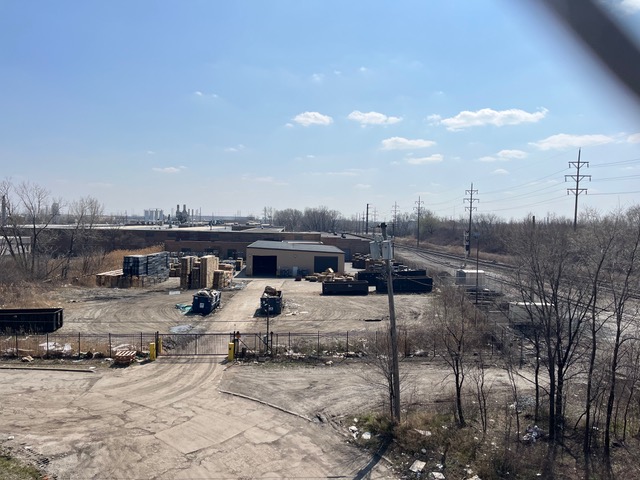Goldstone’s latest book is “Not White Enough: The Long, Shameful Road to Japanese American Internment.” Learn more at www.lawrencegoldstone.com.
At a time when a cloudy day will evoke partisan accusations from both the left and the right, it is of little surprise that the tanking of Silicon Valley Bank, the second largest such failure in the nation’s history, would become immediate political fodder.
To the left, the bank’s failure was due to softening the reserve rules during the Trump administration, for which one of the major cheerleaders was Greg Becker, SVB’s CEO. Elizabeth Warren, writing in The New York Times, insisted, “No one should be mistaken about what unfolded over the past few days in the U.S. banking system: These recent bank failures are the direct result of leaders in Washington weakening the financial rules.”
She accused the usual suspects. “In the aftermath of the 2008 financial crisis, Congress passed the Dodd-Frank Act to protect consumers and ensure that big banks could never again take down the economy and destroy millions of lives. Wall Street chief executives and their armies of lawyers and lobbyists hated this law. They spent millions trying to defeat it, and, when they lost, spent millions more trying to weaken it.”
To the right, it was the investment in “woke” causes, such as the environment, social programs, and corporate governance that wrecked SVB. Ron DeSantis, who never met an issue to pander to that he didn’t like, attacked the bank’s diversity, equity, and inclusion programs that “diverted from them focusing on their core mission.” Not to be outdone, Tucker Carlson sneered that diversity and inclusion initiatives are the reason “big banks are now increasingly incompetent.”
As is almost always the case with dueling ideologies, each sidestepped the actual issue. Buried in the hyperbole was that the bank’s bond portfolio, a large part of which was supposedly rock-solid, long term U.S. government securities, represented a significant portion of the reserves the bank was required to hold against depositor withdrawals. (The bank chose to avoid shorter term instruments that paid less but were more liquid, which, at the time, did not raise red flags.) During the Federal Reserve’s hundred-yard dash to boost interest rates to fight inflation, these long-term securities lost a good bit of their value, eroding their utility as reserve assets and rendering them unsaleable except at a huge loss. When depositors became nervous and withdrew their money, SVB was done.
The Fed’s strategy was questionable at best. While some intervention was certainly necessary to stem inflation, which had reached almost nine percent, the Fed, led by Chairman Jerome Powell, kept pummeling the markets with hefty rate increases each month, further depressing bond prices and leaving investors, including banks, scrambling to cover the shortfall. SVB’s overaggressive chairman was indeed grossly negligent in not considering the possibility of adverse market moves, but it is also true that Powell’s rate increases went on even when inflation began to cool.
Neither the bank’s lending policies nor its diversity initiatives were in any way responsible for SVB’s collapse, and it is unlikely that even tighter reserve standards could have saved the bank from its own executives’ greed and stupidity.
Powell’s critics, and recently there have been many, claimed that his actions were extreme, motivated by a desire to be thought of in the same terms as the legendary Paul Volcker, who navigated the economy through extreme inflation under presidents Carter and Reagan, rather than Arthur Burns, a Richard Nixon crony, who allowed inflation to hurtle the nation headlong toward a financial cliff. But whether the Fed acted properly or not, what is not discussed nearly enough is that the inflation it was fighting was a delayed symptom of the Covid pandemic.
It is remarkable that Americans seem to have forgotten that unemployment, now under four percent, was at fifteen percent just three years ago, the highest since data collection began in 1948. And this figure was likely understated because so many people had left the workforce. (Almost) no one would set foot in a restaurant, a movie theater, or a retail store, except for absolute necessities. Both the health care system and the overall economy seemed on the verge of collapse. Americans were dying in such great numbers that bodies needed to be stored in refrigerator trucks. Eventually, many political leaders—not all of them Democrats—decided that lockdowns were the only way to prevent what could have escalated into the second coming of the Black Death.
Faced with imminent disaster, the Fed flooded money into the system and the Biden administration pushed through some massive spending bills, both of which were attacked by many conservatives. But what was the choice? Free market economics only works when there is a market to be free, and the American market was drying up fast. So the government in effect created an artificial market, a fiscal respirator, to help the nation survive until it could breathe on its own.
When the economy did rebound, it did so quickly and powerfully. Employment skyrocketed but so did prices, as demand ticked up sharply but supply, still impacted by the worldwide pandemic, failed to keep pace. An argument can be made that supply-side inflation will not be efficiently curtailed by raising interest rates—thus requiring a lot of them—but Powell, with the ghost of Arthur Burns hovering over his shoulder, was taking no chances. As a result, when prices did finally begin to come down, so did interest rate sensitive demand, and with that, many businesses, especially in the tech field—SVB’s bailiwick—began to cut back.
There is the additional question of whether the lockdowns were necessary. Conservatives now insist they were not, that schools should have remained open because children seemed to get a much milder version of the disease. But Covid killed in excess of one million Americans, more than died in all the nation’s wars combined. Without extreme measures that number would have been vastly higher, including quite a few teachers, who were not so fortunate to get the same mild form of the disease.
And so, was one million deaths an acceptable tradeoff for what might have been only moderate economic gain, as critics such as Ron DeSantis seem to imply? Would five million dead have been acceptable as well? Ten million? Each of those figures would have been a distinct possibility if we just let the disease run its course…especially without mask mandates, another convenient target.
The real lesson to be taken from SVB’s collapse is that this nation’s seeming inability to remember farther back than the previous week and the righteous indignation that has replaced intelligent planning and cooperative political discourse will make this sort of event and the crises they engender far more likely in the future.
Faulty memories are, after all, the incubator of future catastrophes, and one can only hope that our politicians’ collective brain fog clears in time to avoid the next one.






















